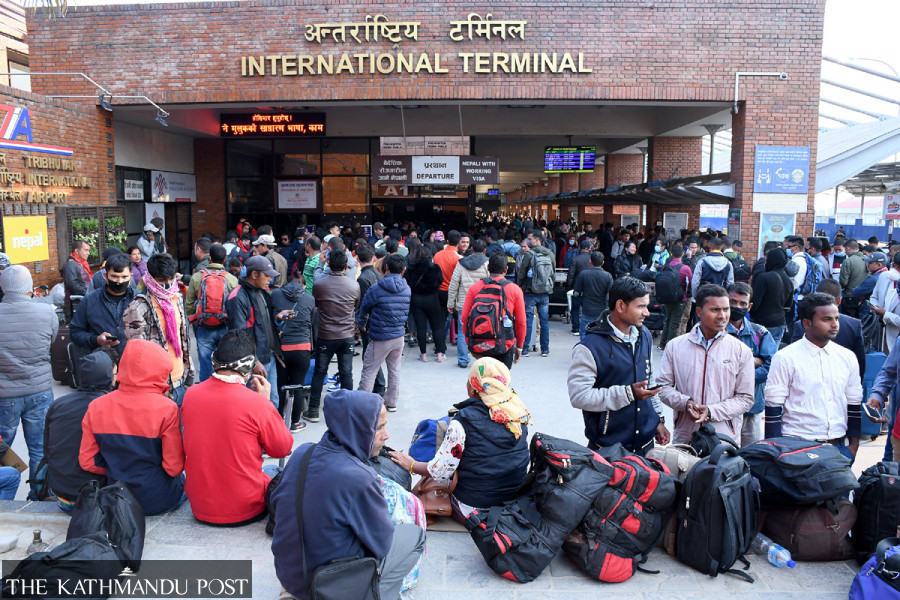Editorial
Exodus of human capital
Education abroad doesn’t guarantee success, but our students aren’t sure about the quality here.
In what looks like a perfect example of a circle of financial gain and loss, Nepal is sending a significant amount of money, much of which is earned through remittance, to foreign destinations every year to pay for the higher education of Nepalis. In the first nine months of the fiscal year 2023-24, which began in mid-July, the country sent out 95.85 billion rupees in foreign education alone. The figure could be even higher, as students and their guardians often find non-conventional or illegal mediums, including hundi, to transfer money abroad. What is alarming is that the official figures represent a 42.5 percent increase from the same duration in the last fiscal year, when students took Rs67.19 billion to spend on education abroad. In FY 2022-23, the total outgoing amount stood at Rs142 billion, a 48 percent rise from the Rs67.70 billion in FY 2021-22.
Along with cash, the number of Nepali youths leaving home for education abroad is growing each year. In the first eight months of the current fiscal year, over 90,000 students have obtained the no-objection certificate (NOC) from the Ministry of Education. The total figure for FY 2022-23 stood at over 110,000, while it was almost 113,000 in FY 2021-22. As per the Ministry of Education, the number of students obtaining NOC has tripled in the past decade. That these students start earning after a few years and send money is a positive fact not to be missed—Nepal’s remittance is growing every year, thanks to the students-turned-non-resident Nepalis and labour migrants. But what we gain from remittance, we end up losing in the form of human capital. At a median age of 27.1, we are still a relatively younger country, which makes us a lucrative source for the export of youths.
Our youths are heading out of the country in hundreds of thousands each year, and the risk is that they might return to the country only when we have missed the train of development. It is no surprise that 33 percent of the NOCs are obtained for study in Japan, a country of old people with a median age of almost 50 years. Ageing or aged developed countries like Japan, the United States and Canada, among many others, need a constant supply of youth migrants willing to toil hard. Poor countries of Asia and Africa have become rich sources for the export of cheap labour that not only sustains the economies of developed countries but also supplies children who transform from immigrants to naturalised citizens and keep those countries in rude demographic health.
Meanwhile, those in positions of power in Nepal, including political leaders, bureaucrats and university and school authorities, continue to turn the country into an undesirable place. As education becomes expensive and the job market is saturated, youths see no reason to stay back in Nepal. While education abroad is no guarantee of success, we have collectively failed to assure students of the quality of education we are offering at home. Apart from improving the quality itself, we also need to work on image-building—that Nepal’s education is not as bad as it has been made out to be.




 12.12°C Kathmandu
12.12°C Kathmandu












%20(1).jpg&w=300&height=200)

